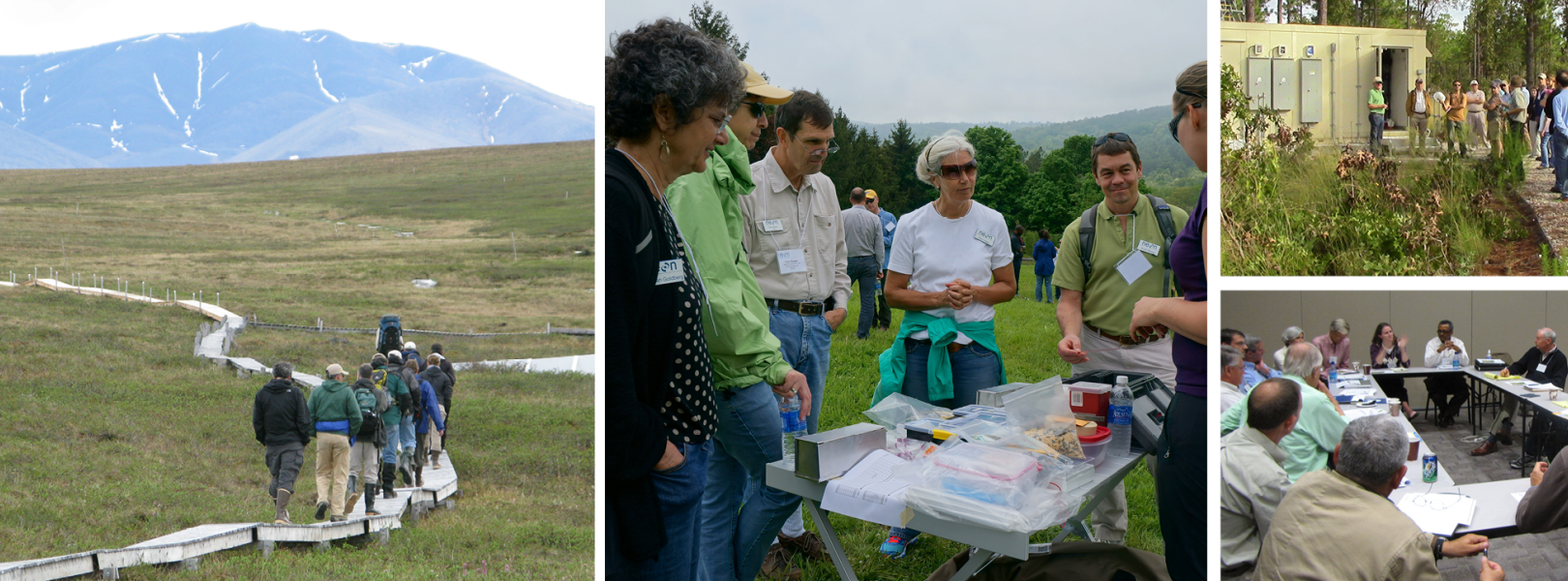Science, Technology & Education Advisory Committee (STEAC)

About the NEON STEAC
The Science, Technology & Education Advisory Committee (STEAC) is an advisory body to the NEON Program that provides strategic advice to Battelle, the NEON Principal Investigator (PI), and NEON staff on the planning and operation of the NEON Program. This guidance encompasses, but is not limited to:
- How the NEON Program can meet its high‐level vision
- NEON’s science requirements
- Significant potential enhancements of the NEON Program
- NEON’s strategic engagement
- Metrics and evaluation of program progress and success
- Prioritization of operational activities
The STEAC members serve three-year terms and are expected to attend an annual in-person meeting at NEON headquarters in Boulder, CO, each year and participate in monthly conference calls with the Chief Scientist and Observatory Director, and other NEON staff as needed.
STEAC Nominations
NEON seeks passionate, forward-thinking individuals who represent various institution types, areas of expertise, and career stages. We are particularly interested in nominees with expertise in:
- Aquatic Sciences
- Ecological applications of AI
- Ecological & Data Applications in the private sector
- Biodiversity/collections
- Omics
- Remote Sensing
- Curriculum/training
- Agriculture and bioeconomy
The 2025 nomination period for membership on the STEAC closed June 18, 2025. If you submitted a nomination, you will be notified of the nomination status following review.
How STEAC Members are Selected
Announcements that STEAC vacancies need to be filled, along with a roster of current STEAC members and their biographical sketches, will be made available to the broader science and education communities as part of engagement activities, external meeting announcements, and on the NEON website and email newsletter.
The Chair may form a subcommittee to vet nominations for candidates who wish to serve on the STEAC, or may decide to have them vetted by the full STEAC. The broader community will have 30 days from the initial announcement to contact the STEAC nomination committee with potential candidates. Self-nomination or peer nomination is allowed. Candidates may also be provided to the STEAC by the NEON PI, the Chief Scientist and Observatory Director, and NEON staff. Nominations must include full name, contact information, a curriculum vitae, and a one-paragraph description of the interests and skills the candidate would bring to the STEAC.
Members are selected from the pool of nominations received. Particular attention is given to nominees who are already using NEON data or planning to use NEON data, and are experts in areas of high priority for the Observatory. STEAC members should have a solid scientific reputation in their discipline and possess the following professional attributes: 1) understand the challenges of incorporating new technology into ecology, and 2) represent thoughtful and engaged scientists who understand the mission of the National Science Foundation Biological Sciences Directorate, NEON, other research networks and, 3) hold considerable credibility within the broader scientific community.
Because the scope of NEON is broad as well as deep, the membership will represent a range of specific sub-disciplines needed to successfully advise Battelle regarding the NEON program. The STEAC membership is also intended to be inclusive, including representation from all career stages, institution types, geography (e.g., NEON Domain representation), area of expertise, and background.
Overall acceptance of a candidate will be determined by a yes vote of the majority of the subcommittee or full STEAC; they will recommend the addition of the new STEAC member to the NEON PI for final approval. The invitation to join STEAC is tendered from the NEON PI and the STEAC Chair. The selection and publication of the STEAC membership for the upcoming year will be published on the NEON website by September 1 of each year.
Current Members
| Name | Affiliation | Bio |
|---|---|---|
| Kelly Aho | Boston University | link |
| Benjamin Baiser | University of Florida | link |
| Kin Onn Chan | Michigan State University | link |
| Jennifer Edmonds - Chair | Nevada State University | link |
| John Kochendorfer - Secretary | National Oceanic and Atmospheric Administration | link |
| Sydne Record | University of Maine | link |
| Samapriya Roy | Desert Research Institute & Spatial Bytes | link |
| Daniel Rubenstein | Princeton University | link |
| Adrienne Sponberg - Co-Chair | Ecological Society of America | link |
| Xi Yang | University of Virginia | link |
STEAC Documents
STEAC Charter and By-Laws (PDF)